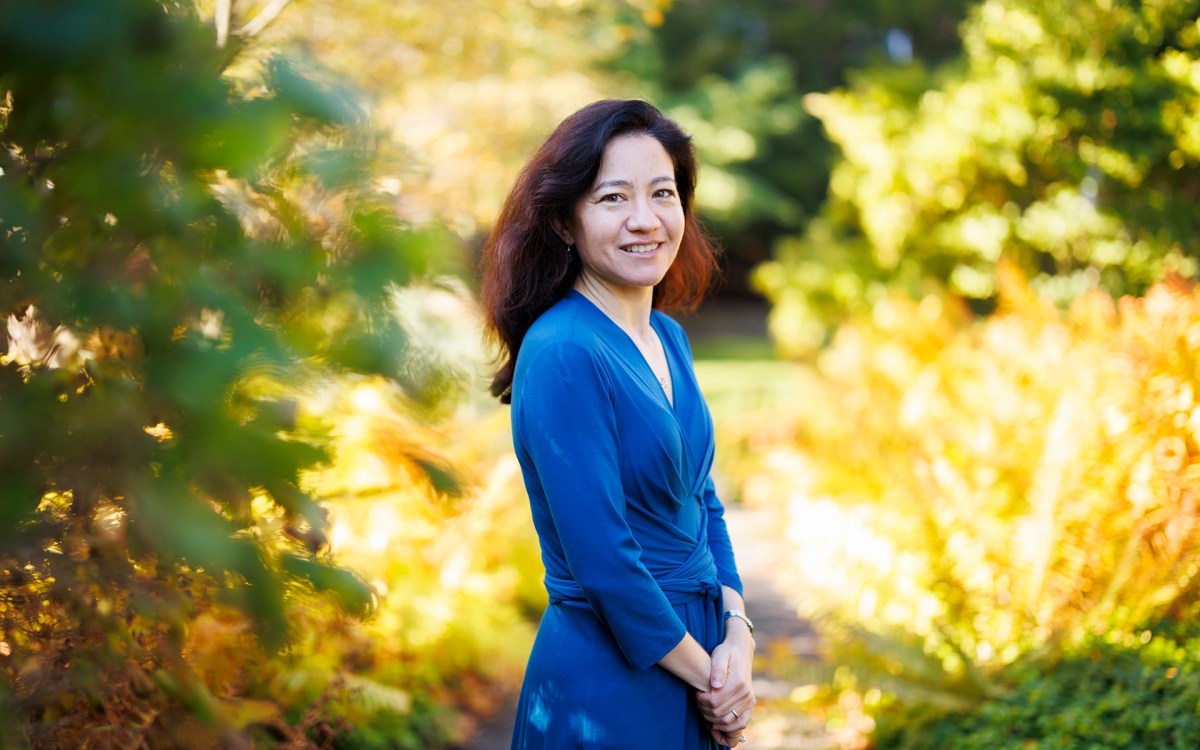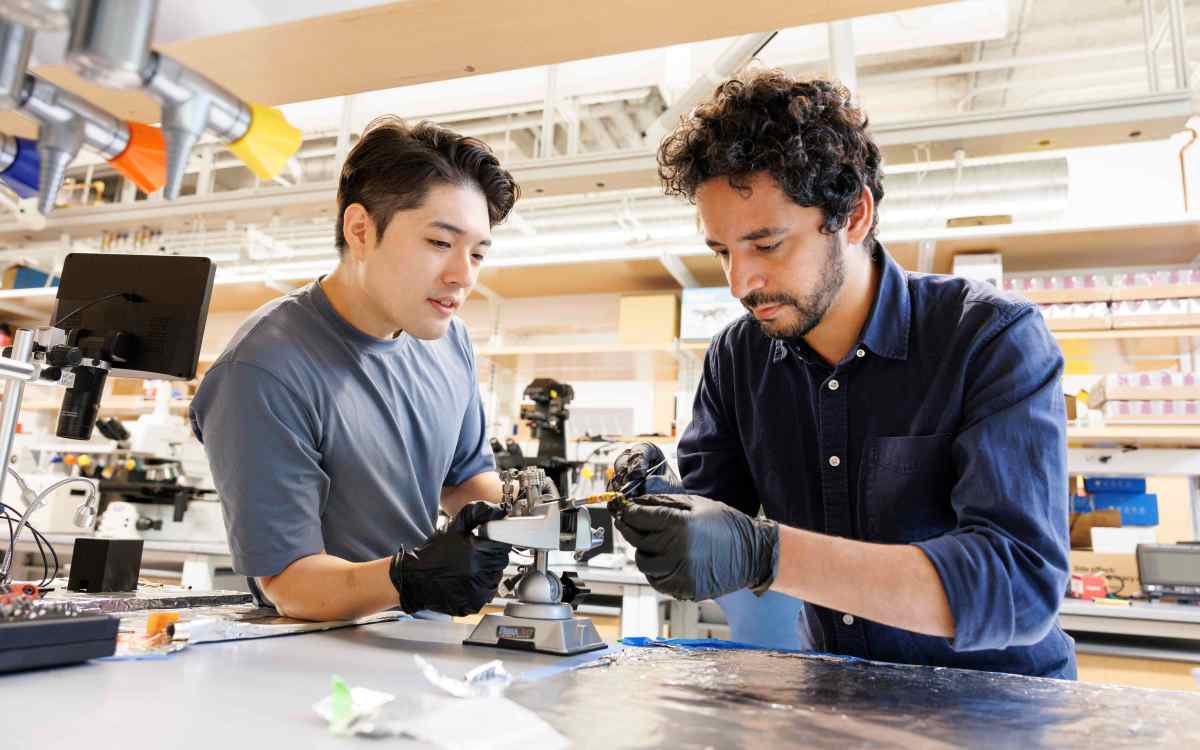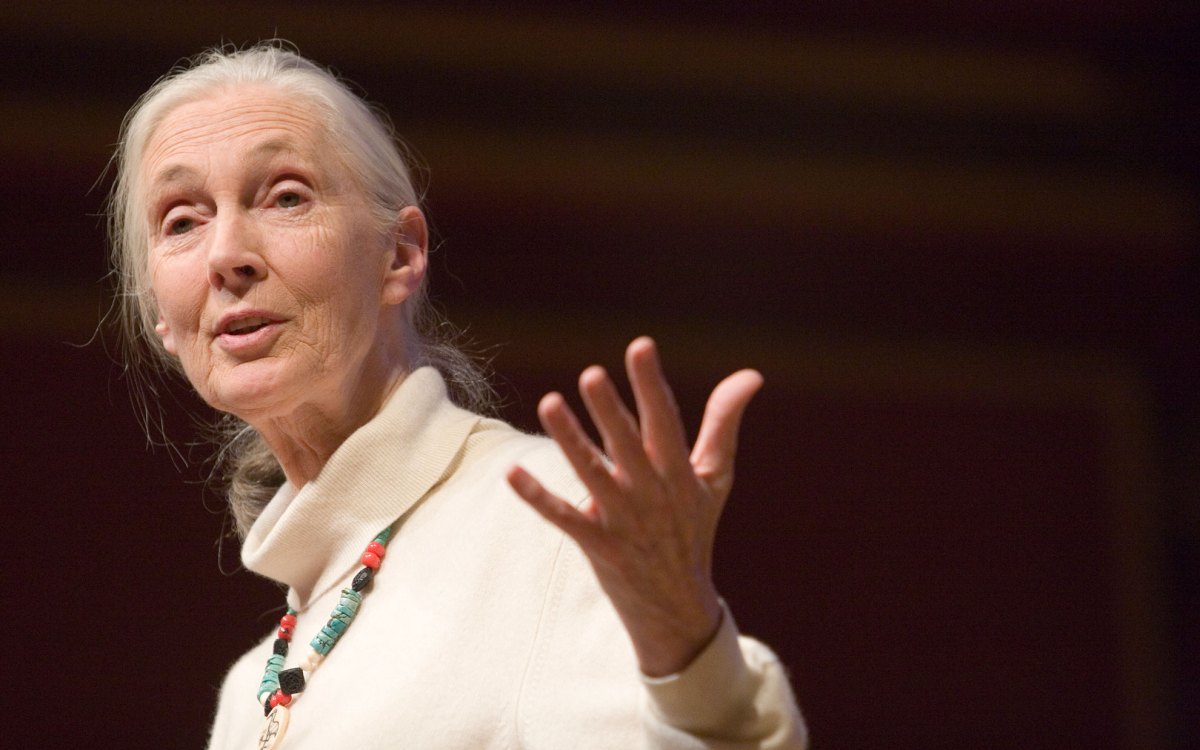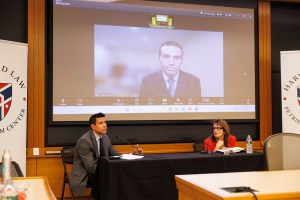Science & Tech
-

Harsh past might bare its teeth
Early adversity leads to higher aggression and fearfulness in adult canines, study says

-

What will AI mean for humanity?
Scholars from range of disciplines see red flags, possibilities ahead
-

‘Human exceptionalism is at the root of the ecological crisis’
Saving the planet requires getting over ourselves, argues author of ‘The Arrogant Ape’
-

Lauren Williams awarded MacArthur ‘genius grant’
Math professor honored for theoretical breakthroughs with sometimes surprising applications across phenomena such as tsunamis, traffic
-

-

‘She had a sense of caring for everybody that she encountered.’
Richard Wrangham remembers his teacher and colleague Jane Goodall as a force of science, empathy, and hope
-
Anatomy of the low-income homeownership boom in the 1990s
The rate of home ownership in the United States has grown to an unprecedented 67.7 percent since the 1990s. Low-income ownership has grown in particular. According to a study by…
-
Never-before-seen look inside the world of cancerous tumors
Harvard researchers working at Massachusetts General Hospital’s Radiation Oncology unit have used a powerful new microscope to see inside cancerous tumors. The microscope is so powerful that it can see…
-
National environmental policy during the Clinton years
Researchers at Harvard’s Kennedy School of Government examined the environmental policy record of former President Bill Clinton. Environmental quality improved overall during the decade, the researchers found, continuing a trend…
-
Eighty-five percent of immigrant children separated from families during migration
An ongoing study of more than 400 children who have immigrated to the United States shows that 85 percent of them experience separation from one or both parents during the…
-
Offshore investment funds: Monsters in emerging markets?
Less moderated by tax consequences, and less subject to supervision and regulation, offshore investment funds are alleged to engage in trading behaviors that are different from those of their onshore…
-
Housing market resilient in slowing economy
The housing market has not been affected by a slowing economy, according to a report, The State of the Nation’s Housing: 2001, released in June 2001 by the Joint Center…
-
Children from working-class families twice as likely to be depressed adults
Children from low socioeconomic backgrounds have an elevated risk of depression throughout their lifetimes, even if they become more professionally successful than their parents. That’s the conclusion of a study…
-
Astronomers detect dust disks around very young brown dwarfs in the Orion Nebula
The results of recent observations by an international team of astronomers suggest that brown dwarfs share a common origin with stars. Brown dwarfs are more similar in nature to stars…
-
Star factory near galactic center bathed in high-energy X-rays
A team of astronomers, including some from the Harvard-Smithsonian Center for Astrophysics, has looked into the core of our own Milky Way galaxy and discovered a new phenomenon. The “cauldron”…
-
Chandra sees wealth of black holes in star-forming galaxies
Three independent teams of research scientists, including one from the Harvard-Smithsonian Center for Astrophysics, used NASA’s Chandra X-ray Observatory to find what they suspect are groups of mid-mass black holes…
-
Depiction of alcohol, tobacco use in G-rated animated films still high
Alcohol and tobacco use is depicted as normal behavior in nearly half of G-rated animated feature films. While researchers at the Harvard School of Public Health say that this is…
-
A quasar’s identity may simply be in eye of beholder
A quasar is a super-massive black hole; quasars are among the most energetic objects in the Universe. Most quasars are extremely bright in optical light, but about 10 percent of…
-
Oldest mammal is found
When dinosaurs ruled the world, scampering around their feet were platoons of diminutive insect-eating animals, part reptile, part something new. When the giant reptiles and many other animals were wiped…
-
Students tackle Harvard Square parking problems
A group of students who studied parking problems in Harvard Square issued wide-ranging recommendations, including installing wireless access-control gates at the more than 50 lots across the University, increasing parking…
-
Bringing back the ancient muses
The epic verse of Homer, the love poems of Sappho, the tragedies of Sophocles, and the comedies of Aristophanes – all were accompanied by music. Yet that music – its…
-
What determines who goes to college and who does not?
More than ever, policymakers are adopting merit-based, rather than need-based, financial aid programs, a trend that disquiets Harvard Graduate School of Education Assistant Professor Bridget Terry Long. In Georgia, for…
-
Doctoral student developing Internet search tool
Harvard Graduate School of Education doctoral student Kathleen Guinee is developing a computer-based tool to make searching the Internet easier for all students. Her research so far has focused on…
-
Chandra reveals nest of tight binaries in dense cluster
Observations from a scientific team at the Harvard-Smithsonian Center for Astrophysics have revealed that an incredibly dense star cluster known as 47 Tucanae includes many binary stars. Most of the…
-
Young star may be belching spheres of gas, astronomers say
Observations by astronomers of a young star in the constellation Cepheus, more than 2000 lights-years away, suggest that it is repeatedly belching spheres of gas. Current theories about how young…
-
Chandra pinpoints edge of accretion disk around black hole
An object known as XTE J1118+480 is a black hole roughly seven times the mass of our Sun. XTE J1118+480 is locked in a close binary orbit with a Sun-like…
-
Handheld calculator measures risk of heart attack
When a patient goes to a hospital emergency room with worsening chest pain, doctors must quickly decide whether that person should be given medication and sent home, or whether he…
-
Researcher creates controversy with view of loving families
One of the foremost authorities on the history of the family in the early modern period, Steven Ozment has from his first forays into this field attracted controversy. His latest…
-
Bolstering private environmental management
How can government agencies best regulate private firms’ impact on the environment? One popular new approach — advocated by state agencies and by the U.S. Environmental Protection Agency — is…
-
Harvard faculty press aggressive agenda for AIDS fight in Africa
A statement signed by more than 100 Harvard faculty members calls upon wealthy countries, in partnership with poor countries, to establish a global trust fund to make life-prolonging antiretroviral therapy…
-
Gamma-ray astronomers detect “extreme” galaxies
Gamma rays from X-ray emitting galaxies seem to signal the existence of what astronomers are calling “extreme” galaxies. An international team of astrophysicists made the discovery of very-high-energy gamma rays,…
-
Polar bear research shows global warming is real
Harvard Professor James McCarthy was among a handful of top scientists who coordinated a remarkable report by the world scientific community in 2001 that said global warming is real, it’s…
-
Study defines clear roles for parents of teenagers
A new study by the Center for Health Communication at the Harvard School of Public Health cuts through the confusion that parents of teenagers experience because of conflicting advice. The…
-
Minority students more likely to be labeled “mentally retarded”
When compared with their white counterparts, African-American children were almost three times more likely to be labeled “mentally retarded,” according to a paper by Thomas B. Parrish, managing research scientist…
-
For billion-dollar deals, risk allocation is key
Not too long ago, when dot-com fever was at its peak, observers of the business world oohed and aahed over venture capital transactions involving millions of dollars. From researcher Benjamin…
-
Nine keys to a knowledge infrastructure
Yesha Y. Sivan, CEO of the K2K Knowledge Infrastructure Laboratory and a visiting scholar at Harvard, has outlined a strategy to allow knowledge-based organizations to plan, implement and evaluate the…


